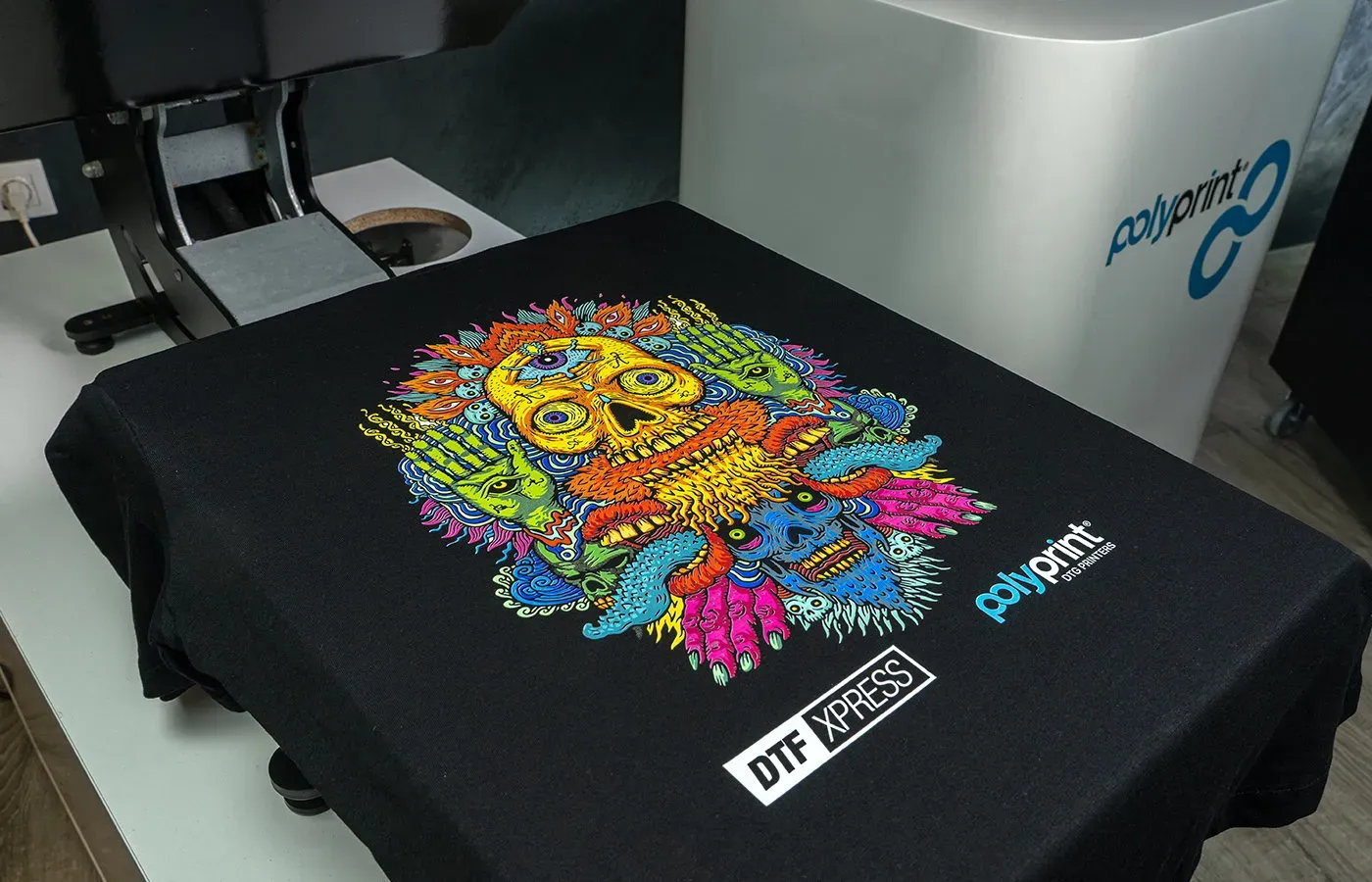DTF printing, or Direct to Film printing, has rapidly gained popularity in the custom apparel world due to its ability to create high-quality prints that captivate and impress. This cutting-edge printing technology allows for vibrant, detailed designs to be printed onto special films before being transferred onto various types of fabrics. From t-shirts to tote bags, DTF transfers can be applied to an array of materials, making it a versatile choice for both DIY enthusiasts and professional printers. As the demand for customized apparel continues to grow, understanding DTF printing opens up countless possibilities for businesses looking to stand out in a crowded market. In this post, we’ll explore the many facets of DTF printing, including its capabilities, advancements, and tips for achieving the best results.
Emerging as a powerful contender in the printing landscape, Direct to Film (DTF) technology is revolutionizing how designs are printed and applied to textiles. This method, which involves printing directly onto a specialized film that is later heat-transferred to fabric, is celebrated for producing impeccable, full-color images that maintain remarkable detail. The adaptability of this process means it caters to quick turnaround times and a wide variety of surfaces, making it extremely appealing for applications ranging from promotional merchandise to personalized clothing. As businesses delve into the realm of custom apparel printing, understanding the nuances of DTF printing can significantly enhance their design capabilities and market offerings. This guide serves as an essential resource for exploring the cutting-edge advancements and effective practices in this innovative printing technique.
Understanding the Mechanics of DTF Printing
DTF printing, or Direct to Film printing, employs a specific process that begins with printing the desired design onto a transfer film using specialized ink. This technology utilizes a printer that is specifically designed for DTF applications, enabling the production of vibrant, full-color designs that can be transferred onto various fabric types. The film, once prepared, undergoes heat pressing, which transfers the ink to the fabric, resulting in high-quality prints that adhere well to the material surface.
One key advantage of DTF printing is its compatibility with different textiles, such as cotton, polyester, and blends. This versatility allows for a broad range of applications, making DTF ideal for custom apparel printing. Users appreciate that they can print intricate, colorful designs with a high level of detail and durability, ensuring that the end products are not only visually appealing but also long-lasting.
Recent Innovations in DTF Printing Technology
Recent advancements in DTF printing technology have significantly influenced the industry, introducing efficient solutions that enhance print quality and expand application possibilities. The launch of printers like the LOKLiK iPrinter DTF-A3-XP600 has made high-quality printing accessible to a wider audience, including small businesses and hobbyists. This model’s user-friendly interface simplifies the printing process, allowing even novices to create professional-grade outputs effortlessly.
Additionally, the expansion of companies such as EazyDTF indicates a growing trend towards large-format DTF printing solutions. Their investment in additional printers reflects the rising demand for quick turnaround times and quality outputs. As these advancements continue to unfold, they not only elevate the standards in textile printing but also enable users to undertake more complex projects with greater ease.
Key Applications of DTF Printing in Various Industries
DTF printing is particularly popular in the custom apparel sector, where it allows businesses to create personalized clothing items that resonate with their target audience. From unique t-shirt designs to custom hoodies, DTF technology enables creators to produce stunning visuals that are not only eye-catching but also durable. Furthermore, the flexibility of DTF printing ensures that it is suitable for both short runs and large-scale productions, catering to diverse business models.
In addition to custom apparel, DTF printing is gaining traction in merchandising, where companies can design promotional products tailored to attract customers. Items such as branded bags, hats, and other accessories can be easily produced using DTF technology, providing an effective way to enhance brand visibility. Moreover, the implications of DTF printing extend into home decor, where personalized items like cushions and curtains showcase the versatility of this printing method in various lifestyle segments.
Optimal Practices for Successful DTF Printing
To maximize the results of DTF printing, it is crucial to invest in reliable equipment and materials. Choosing high-quality printers, such as the recently launched LOKLiK iPrinter, and ensuring compatibility between the transfer films and fabrics is imperative to achieving optimal print quality. Additionally, utilizing quality inks specifically designed for DTF applications can significantly enhance the durability and vibrancy of the final product.
Regular equipment maintenance also plays a vital role in the success of DTF printing. Routine cleaning of print heads, checks of ink levels, and timely replacements of worn components will help in maintaining consistent quality and performance. Establishing a proactive maintenance schedule allows users to avoid unexpected downtime and ensures that their printing operations run smoothly.
The Future of DTF Printing in Garment Industry
The future of DTF printing looks promising as innovations in technology continue to emerge, leading to improved efficiency and print quality. As industry leaders like AM.CO.ZA introduce advanced models tailored for specific markets, the accessibility of DTF printing becomes increasingly apparent. This encourages more entrepreneurs to explore the possibilities within the custom apparel landscape and beyond, fostering a climate of creativity and exploration.
Moreover, the growing consumer demand for customized products suggests that DTF printing will play a pivotal role in shaping the future of merchandising and custom design. As businesses leverage DTF technology to meet these demands, we can anticipate new trends in fashion and home decor that reflect personalization and individual expression, solidifying DTF printing as a cornerstone of modern printing techniques.
Getting Started with DTF Printing for Your Business
For newcomers to the DTF printing industry, understanding how to set up a successful operation is essential. First, familiarize yourself with the necessary equipment and software required for DTF printing. This encompasses investment in a good quality printer, transfer films, and compatible inks, as well as design software that can facilitate the creation of unique artwork. The initial setup may involve a learning curve, but numerous online resources and community forums can provide valuable insights and support.
Furthermore, exploring partnerships with local suppliers and manufacturers can aid in creating a sustainable business model. Networking within the garment printing community allows for sharing best practices and tips on enhancing print quality. By leveraging both technology and community resources, aspiring DTF printing entrepreneurs can successfully navigate their entry into this thriving market.
Frequently Asked Questions
What is DTF printing and how does it work?
DTF printing, or Direct to Film printing, is a modern technique where designs are printed onto a specialized film that is then heat-pressed onto fabric. This process produces vibrant, high-quality prints and is compatible with various materials such as cotton and polyester, making it ideal for custom apparel.
What are the advantages of DTF printing over traditional printing methods?
DTF printing technology offers several advantages, including superior print quality with vivid colors and intricate details, faster production times, and versatility in applying designs to a wide range of fabrics. Additionally, DTF transfers require less setup and can easily accommodate small batch production.
What types of materials can I use with DTF printing?
DTF printing is highly versatile and can be applied to various materials, including 100% cotton, polyester, and blends. This makes DTF transfers an excellent choice for custom apparel, home decor, and promotional items.
How do I maintain my DTF printing equipment for optimal results?
To ensure high-quality prints, it’s essential to regularly maintain your DTF printing equipment. This includes cleaning the print heads, replacing worn-out components, and using compatible materials for printing, such as high-quality DTF films and inks.
What kind of projects are best suited for DTF printing?
DTF printing is perfect for a variety of projects, especially custom apparel like t-shirts and hoodies, as well as merchandising items, and home textiles such as cushions and curtains. Its ability to produce high-quality prints makes it a preferred choice for both personal and commercial projects.
Can beginners successfully use DTF printing technology?
Yes, beginners can successfully use DTF printing technology. Models like the LOKLiK iPrinter DTF-A3-XP600 are designed with user-friendly features, allowing novices to create professional-grade prints with ease. With the right guidance and quality equipment, anyone can master DTF printing.
| Key Points | Details |
|---|---|
| Introduction to DTF Printing | DTF printing is an innovative method for producing high-quality prints on textiles, widely adopted by small business owners and DIY enthusiasts. |
| Definition of DTF Printing | A process where designs are printed on specialized film and transferred to fabric using a heat press. |
| Recent Technological Developments | 1. **LOKLiK iPrinter DTF-A3-XP600** – Launched in 2025, it’s designed for ease of use and high-quality output for small businesses/DYIs. 2. **EazyDTF Expansion** – New printers added for large-format DTF printing with same-day shipping. 3. **AM.CO.ZA A3 DTF Printer** – Targets the South African market for custom garment printing. |
| Applications of DTF Printing | Custom apparel, merchandising, and home decor products. |
| Best Practices for DTF Printing | – Invest in quality equipment. – Use compatible materials. – Perform regular maintenance. |
Summary
DTF printing has emerged as a transformative force in the textile printing industry, offering innovative solutions that cater to a wide audience, from DIY enthusiasts to small business owners. This cutting-edge technology enables the production of high-quality, vibrant prints on various fabrics, making custom designs accessible and affordable. By utilizing advancements from leading companies and adhering to best practices, users can maximize their printing capabilities while meeting the growing demands of the market. As DTF printing technology continues to evolve, it opens up limitless possibilities for creative expression and business opportunities, shaping the future of textile printing.

